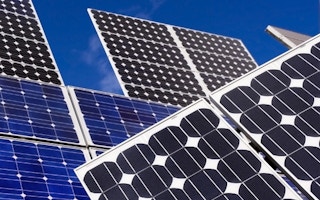Banks in Asia are throwing their weight behind renewable energy projects but it is not likely to stay that way for long, said industry experts at a discussion of financing trends on the final day of Clean Energy Expo Asia.
“There’s an economic war (between renewable energy companies) going on in the sector… but it won’t last,” said Emmanuel Guyot, director of project development at solar systems manufacturer Conergy. “After a few projects fail, the bankers will become more cautious.”
The panel members, comprising mainly solar energy specialists, said that at the moment, the enthusiasm of financiers for the sector tends to hinge upon how much they know about it.
In India, for example, shared Pankaj Sehgal, managing director of Sungroup, banks are not familiar with solar energy, so not many of them are willing to finance it.
“But they understand wind really well, so they have more proclivity towards financing that,” he said. The flip side of this, he added, is that while there are many players in the Indian wind market, there are far fewer solar players and some of these are “not so credible”.
There seems to be a gap between perception and reality, suggested moderator Nathaniel Bullard, director of content at Bloomberg Energy Finance. “How much do politicians and financiers really understand about providing clean energy to the region?” he asked.
Samuel Priest, key senior lawyer at Baker & McKenzie, pointed out that both investors and insurers require an understanding across the board of how renewable energy technology actually works. “The gap has to be filled between the knowledge of an engineer and the needs of an investor,” he said.
Illustrating this point, Mr Guyot highlighted the issue of people choosing to use cheaper but less efficient components, while overlooking other important aspects of technical design.
As an example, he cited power collection modules in a solar plant: many developers, he said, tend to go for cheaper modules, but the lower efficiency level that makes such modules cheaper also means that the plant requires 30 per cent more land, structures and cabling in order to achieve the same output.
“At the end of the day your module is cheaper, but when you compare the turnkey price, you end up costing as much as if you had used (the more expensive module),” he said. “You’re actually comparing prices that are falsely cheaper.”
Mr Xavier de Nazelle of Aloe Private Equity noted that certain types of renewable energy may be more difficult than others to finance.
In a comparison of several different power generation methods, he pointed out that wind and biomass are attractive because of their short commissioning period, but the first requires land acquisition and the second has environmental impact; solar, on the other hand, has the highest output but is also the most costly.
Hydro, meanwhile, is low maintenance and low impact but has a long commissioning period, making it vulnerable to execution risks including inflation. As a result, it is difficult to get equity for hydro projects. “There are a lot of unfinished hydro projects sitting around in India,” he noted.
Mr Guyot and Mr Priest also listed out a number of market failures which are affecting companies’ chances of obtaining financing.
The most serious one, said Mr Priest, is the inability for investors to have certainty of revenue streams – one of the first questions raised when financing projects. It may be due to political uncertainties that make it difficult to sign long-term power purchase agreements, or it may be due to the company’s own oversights, but the end result, he said, is that long-term revenues cannot be predicted.
Mr Guyot also gave some suggestions for overcoming the problems. Companies, he said, need to have performance guarantees in place if they want to secure cash flows; they also need to ensure that they get the timing of their project right and find a partner whose aims and strategy are in line with theirs.
They should also, he added, look into bundling projects when seeking financing, as banks will tend to favour economies of scale. “For a financial institution, it takes the same amount of money to finance a 5 MW project as to finance a 100 MW project,” he pointed out.
At the same time, there is currently a strong emphasis on local financing. Speaking at a later session continuing the discussion, Ken Cheung, partner at Watson Farley & Williams LLP observed that in Southeast Asia, much financing for the sector is now taking place locally, rather than being the province of foreign institutions. There is not much room left for foreign investment, he added.
“The problem with traditional funds in the US and Europe, especially the large pension funds, is that they are looking for large projects; US$50-$100 million investments,” agreed Mr Priest. “In Asia, the focus is more on projects of size 30 MW and under, and that’s not so attractive to large institutional investors.”
Ultimately, it is up to individual governments to implement robust renewable energy policies and targets, said Mr Priest.
Citing his home country, Australia, which has targeted to have 20 per cent of its energy needs met through renewable energy by 2020, he said: “Those targets will give people something to work towards. Governments need to recognize that they have to put these policies in place to attract the required capital.”
Eco-Business.com’s coverage of Clean Energy Expo Asia 2011, part of Singapore International Energy Week 2011, is brought to you by Schneider Electric.













